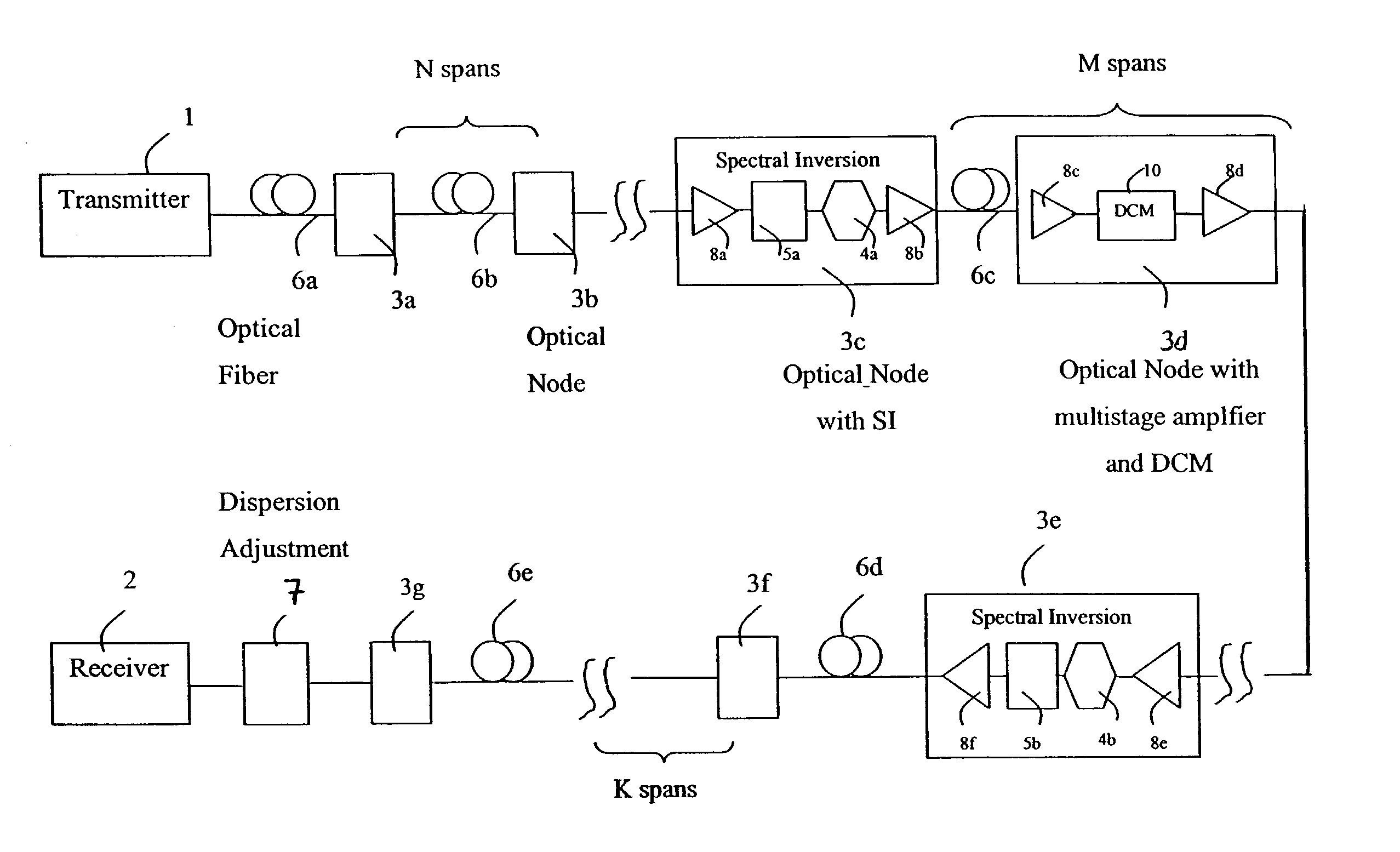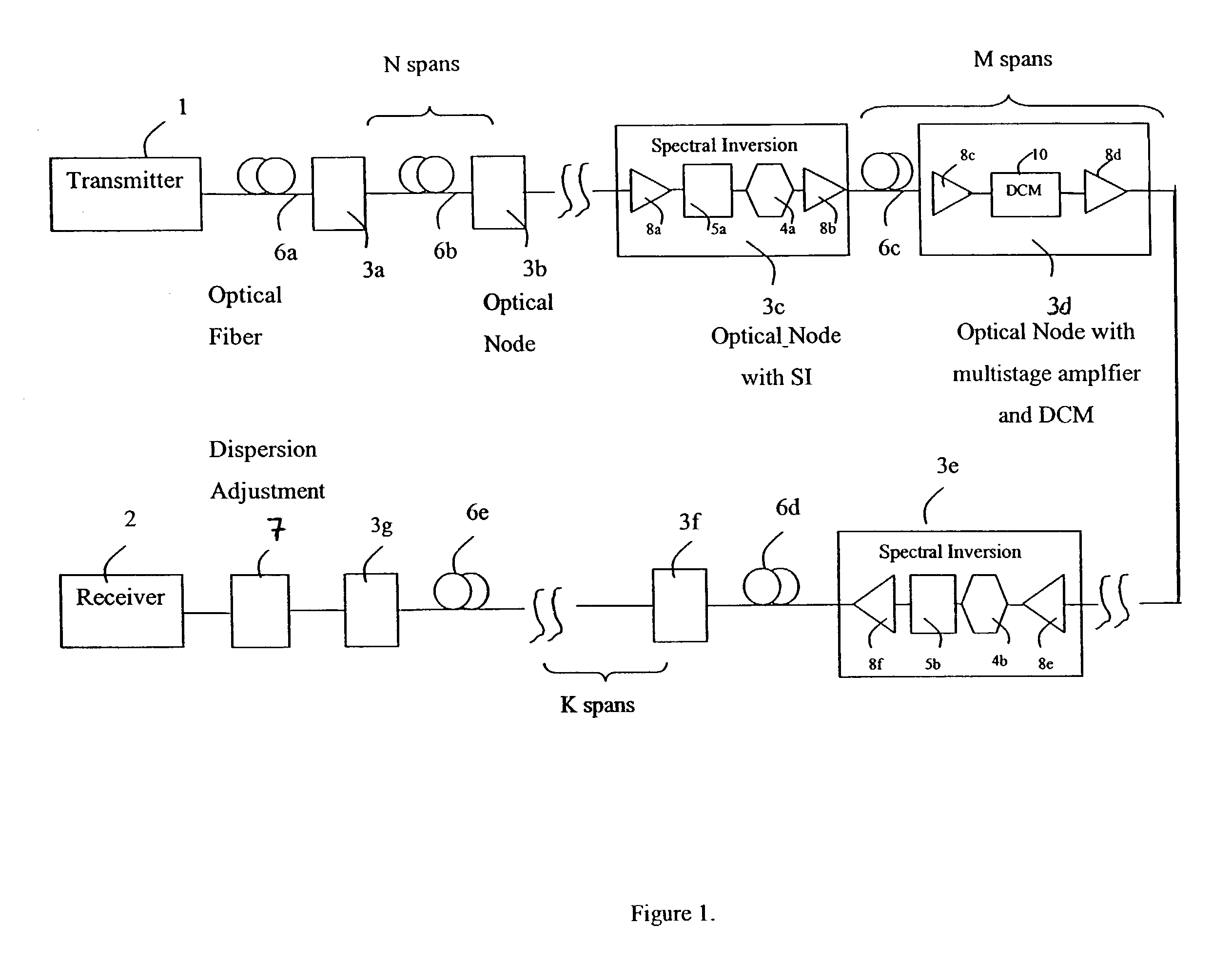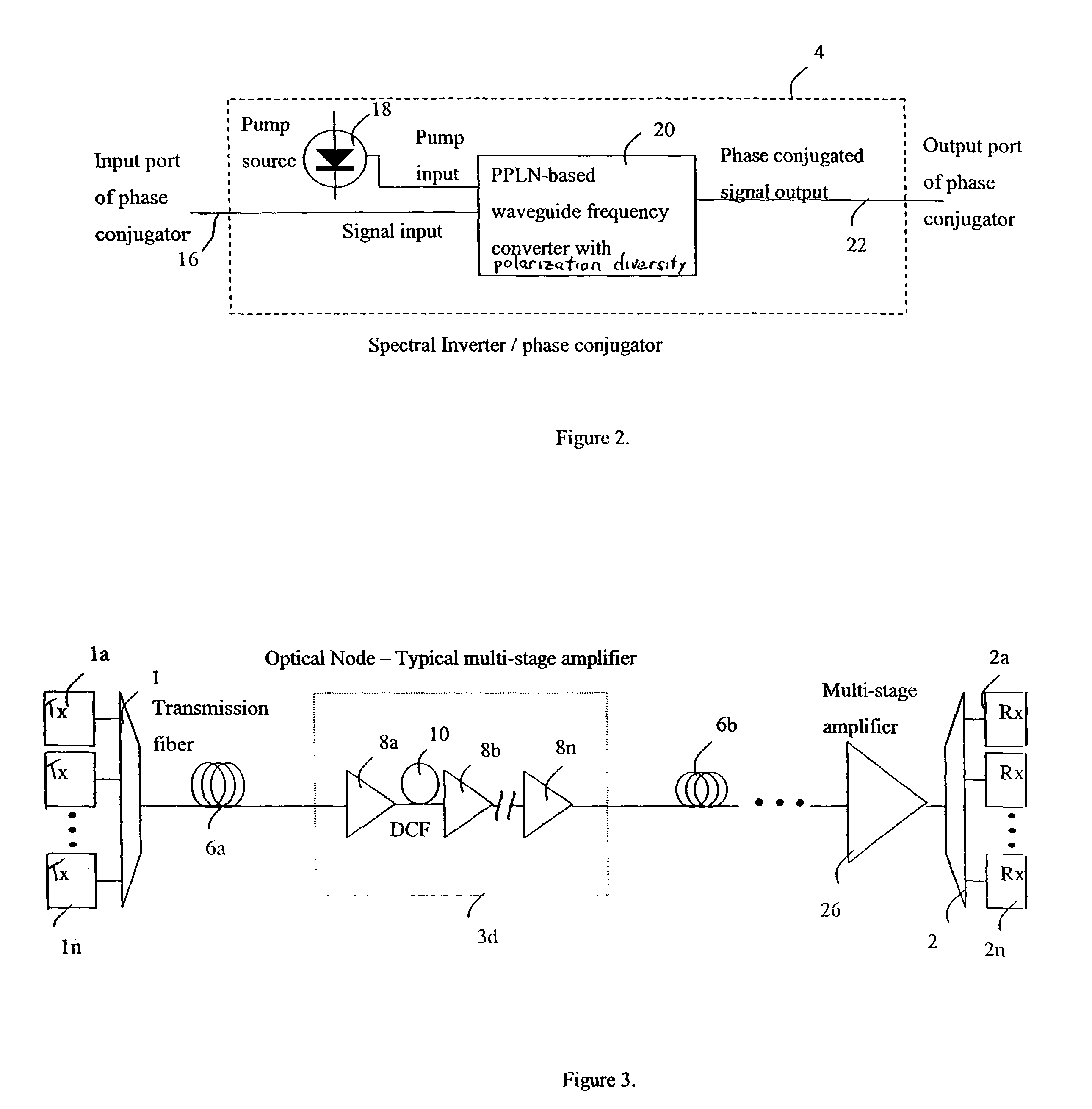Spectral inversion and chromatic dispersion management in optical transmission systems
a technology of optical transmission system and chromatic dispersion, applied in electromagnetic transmission, electrical equipment, transmission, etc., can solve the problems of increasing the risk of fiber optic transmission system impairment, significant power penalty, and increasing optical signal distortion
- Summary
- Abstract
- Description
- Claims
- Application Information
AI Technical Summary
Benefits of technology
Problems solved by technology
Method used
Image
Examples
example
Mixed Fiber, 10 Gbps Transmission
[0059] This example demonstrates the importance of the parameter space choices in the spectral inversion configuration for optimization of signal quality. The system is a mixed fiber span, having of 24 segments of SMF28 fiber and 8 segments of TrueWave fiber for a total of 2560 km transmission distance (32.times.80 km). Five channels spaced at 25 GHz at constant launch power of 0 dBm per channel were assumed. (These simulations use conventional computer software for optical design.)
[0060] The optimal values for dispersion were 95% for the SMF28 fiber portion and 120% for the TrueWave fiber portion (relative to the expected value for dispersion compensation from linear assumptions). The Q performance with only dispersion optimization was found at the receiver to be 11 dB.
[0061] Adding two spectral inversions, at the mid-point of each fiber portion (12th and 28th segments), with appropriate dispersion adjustment at the optical nodes huts (20% and 60%, ...
PUM
 Login to View More
Login to View More Abstract
Description
Claims
Application Information
 Login to View More
Login to View More - R&D
- Intellectual Property
- Life Sciences
- Materials
- Tech Scout
- Unparalleled Data Quality
- Higher Quality Content
- 60% Fewer Hallucinations
Browse by: Latest US Patents, China's latest patents, Technical Efficacy Thesaurus, Application Domain, Technology Topic, Popular Technical Reports.
© 2025 PatSnap. All rights reserved.Legal|Privacy policy|Modern Slavery Act Transparency Statement|Sitemap|About US| Contact US: help@patsnap.com



